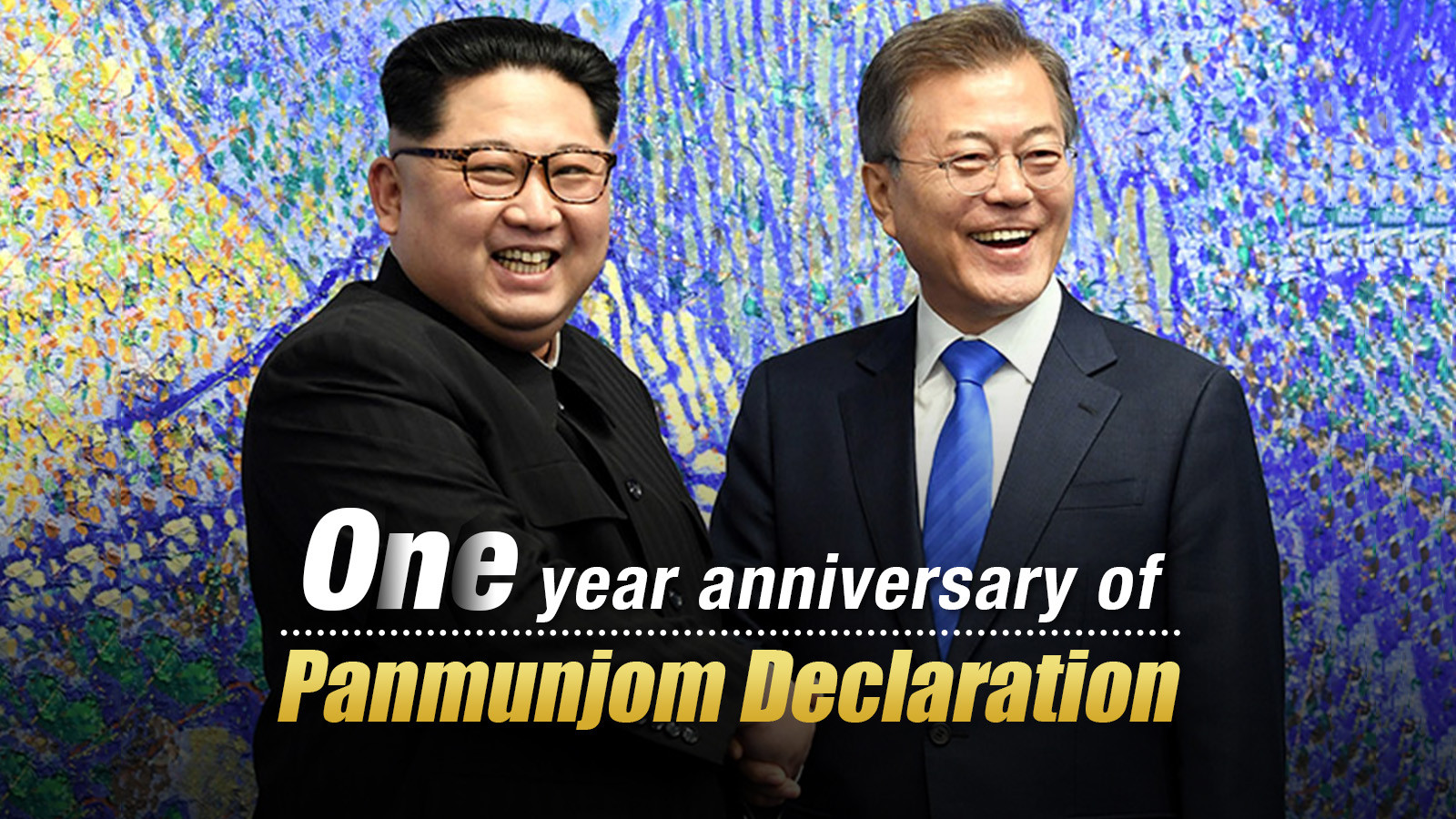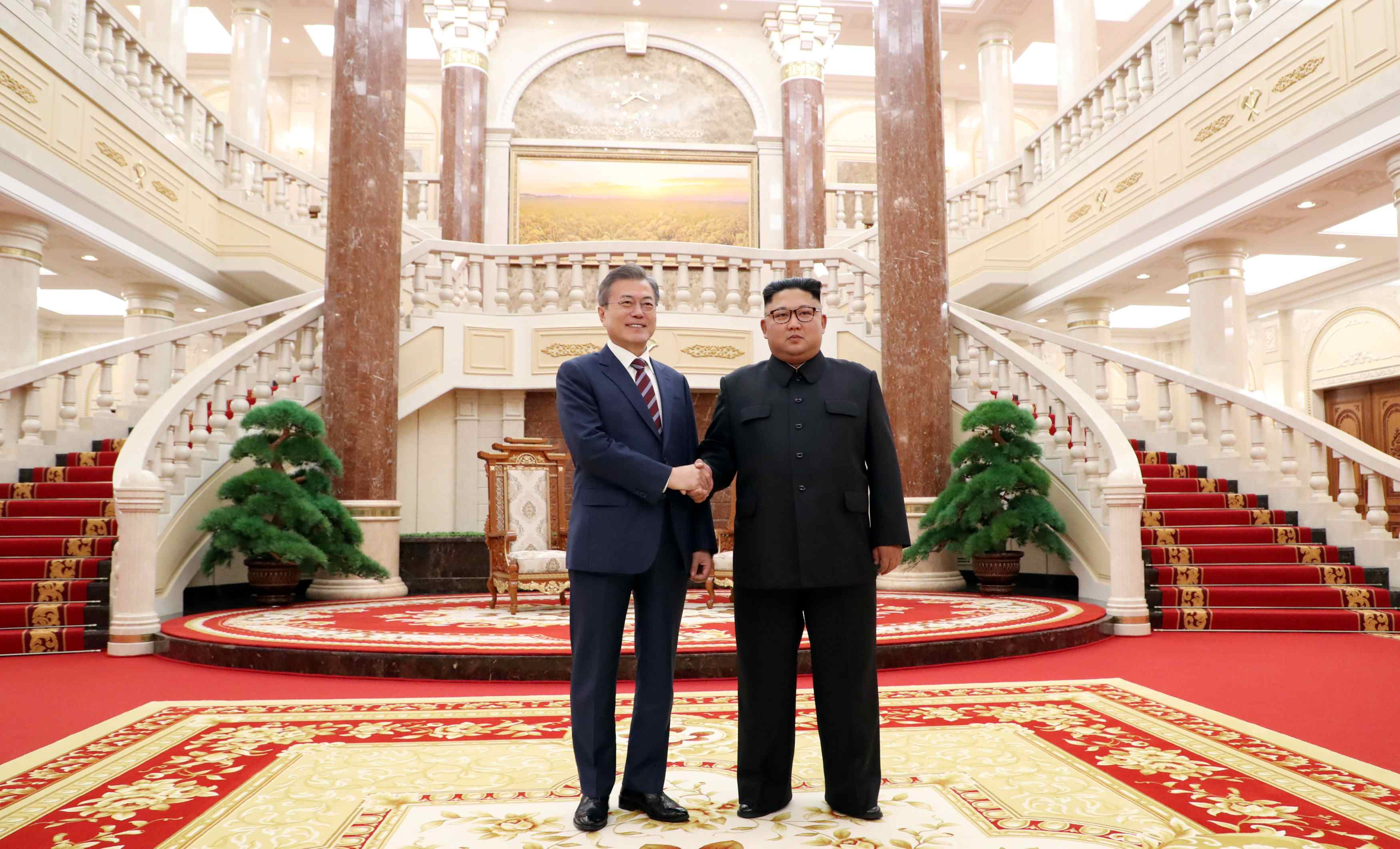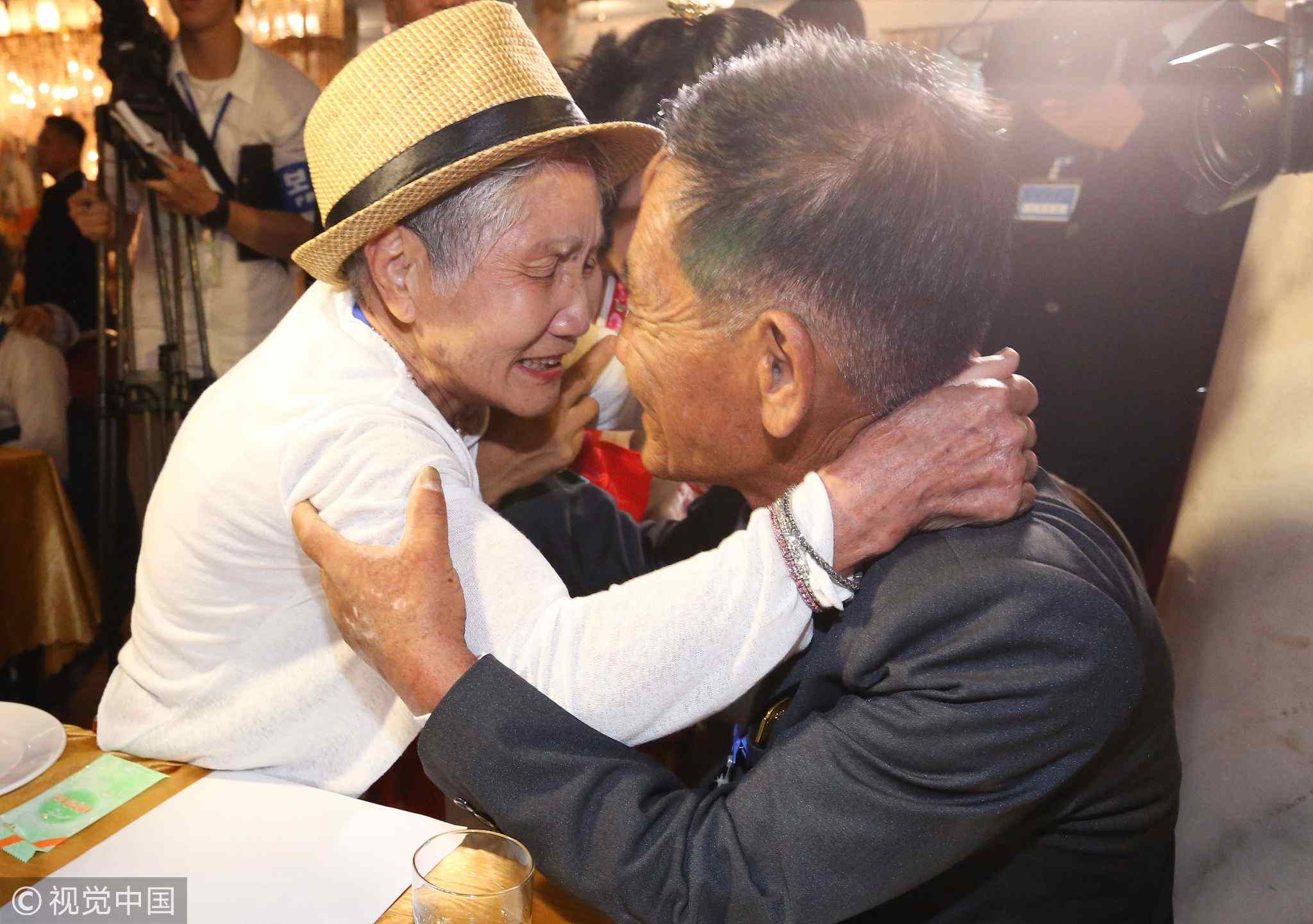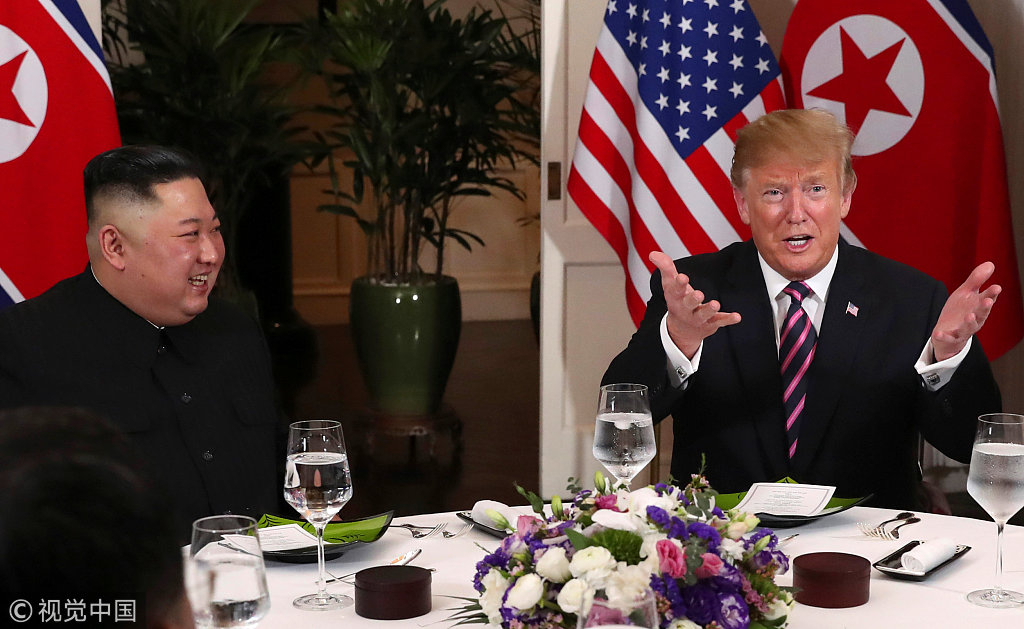01:44

One year ago, Democratic People's Republic of Korea (DPRK) leader Kim Jong Un and Republic of Korea (ROK) President Moon Jae-in met in Panmunjom on the border of the two countries in their first summit.
The pair issued a joint declaration afterward, with key goals listed as improving inter-Korean relations, easing military tensions and establishing a peace regime on the Korean Peninsula.
Now that one year has passed, were the promises fulfilled?
Improvement in inter-Korean relations
The declaration said that "improving and cultivating inter-Korean relations is the prevalent desire of the whole nation and the urgent calling of the times that cannot be held back any further." During the past year, the promise has been fulfilled in many aspects.
In the declaration, the two Koreas agreed to hold meetings on various subjects at all levels.

ROK President Moon Jae-in shakes hands with DPRK leader Kim Jong Un as they arrive for their meeting at the headquarters of the Central Committee of the Workers' Party of Korea in Pyongyang, DPRK, September 18, 2018. /Reuters Photo
ROK President Moon Jae-in shakes hands with DPRK leader Kim Jong Un as they arrive for their meeting at the headquarters of the Central Committee of the Workers' Party of Korea in Pyongyang, DPRK, September 18, 2018. /Reuters Photo
Kim and Moon held another two summits in last May and
September in a bid to accelerate the Panmunjom Declaration.
Under the agreement, the first
joint liaison office was opened by the two Koreas in Kaesong last September and the chief officials from the two sides have held several meetings.

ROK's Lee Keum-seom (L), 92, meets with her DPRK son Ri Sung Chol (R), 71, during a separated family reunion meeting at Mount Kumgang resort on DPRK's southeastern coast, August 20, 2018. /VCG Photo
ROK's Lee Keum-seom (L), 92, meets with her DPRK son Ri Sung Chol (R), 71, during a separated family reunion meeting at Mount Kumgang resort on DPRK's southeastern coast, August 20, 2018. /VCG Photo
The number of ROK people visiting the DPRK and vice versa increased sharply to 7,498 in 2018 from 115 in 2017, the Korea Herald reported citing government data.
In addition, the two sides launched a project to
connect railways and roads across the inter-Korean border, reached agreement on
forestry cooperation and held various sports events.
Easing military tensions
The declaration stated that the two Koreas "will make joint efforts to alleviate the acute military tension and practically eliminate the danger of war on the Korean Peninsula," and agreed to "completely cease all hostile acts."
The ROK, the DPRK, and the UN Command finished
removing firearms and troops from the Joint Security Area in Panmunjom last October, as agreed in the Panmunjom Declaration.
Broadcasting through loudspeakers and the distribution of leaflets in areas along the Military Demarcation Line (MDL) had been immediately suspended as pledged by Kim and Moon.
Meanwhile, discussions on turning areas around the Northern Limit Line in the West Sea into a maritime peace zone have made little headway so far.
Slow progress in establishing a peace regime on the peninsula
In the declaration, the two Koreas vowed to "cooperate to establish a permanent and solid peace regime on the Korean Peninsula. Bringing an end to the current unnatural state of armistice and establishing a robust peace regime on the Korean Peninsula…"
That includes a "common goal of realizing, through complete denuclearization, a nuclear-free Korean Peninsula."
Kim declared last April that he will suspend nuclear and missile tests. One month later, Pyongyang said it had destroyed the Punggye-ri test site.
During the September summit with Moon, Kim agreed to specific denuclearization steps for the first time, including the permanent closure of its Tongchang-ri engine test site and to allow site inspection by experts.

U.S. President Donald Trump and DPRK leader Kim Jong Un sit down for a dinner during the second Trump-Kim summit at the Metropole Hotel in Hanoi, Vietnam, February 27, 2019. /VCG Photo
U.S. President Donald Trump and DPRK leader Kim Jong Un sit down for a dinner during the second Trump-Kim summit at the Metropole Hotel in Hanoi, Vietnam, February 27, 2019. /VCG Photo
However, the nuclear talks entered an impasse following the collapse of the Trump-Kim summit in Hanoi. The two failed to reach a deal on the extent of economic sanctions relief for the DPRK in exchange for its steps to give up its nuclear program.
To break the deadlock, Moon has called for a fourth summit with Kim, though he has not replied yet.
Also, little progress was made in the pursuit of trilateral meetings involving the two Koreas and the U.S., or quadrilateral meetings involving the two Koreas, the U.S. and China, as agreed last April.





